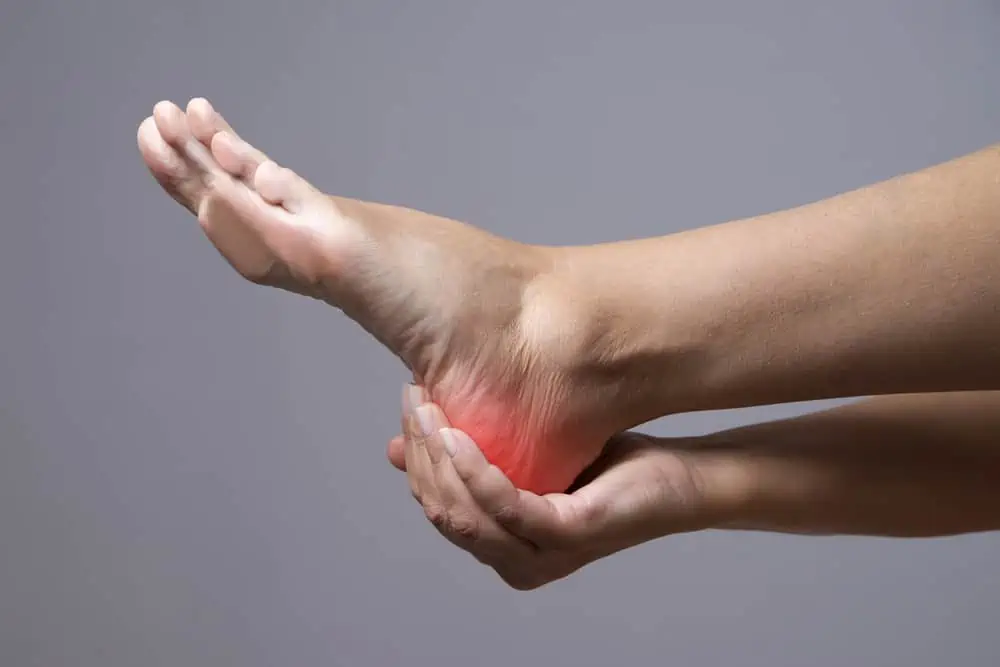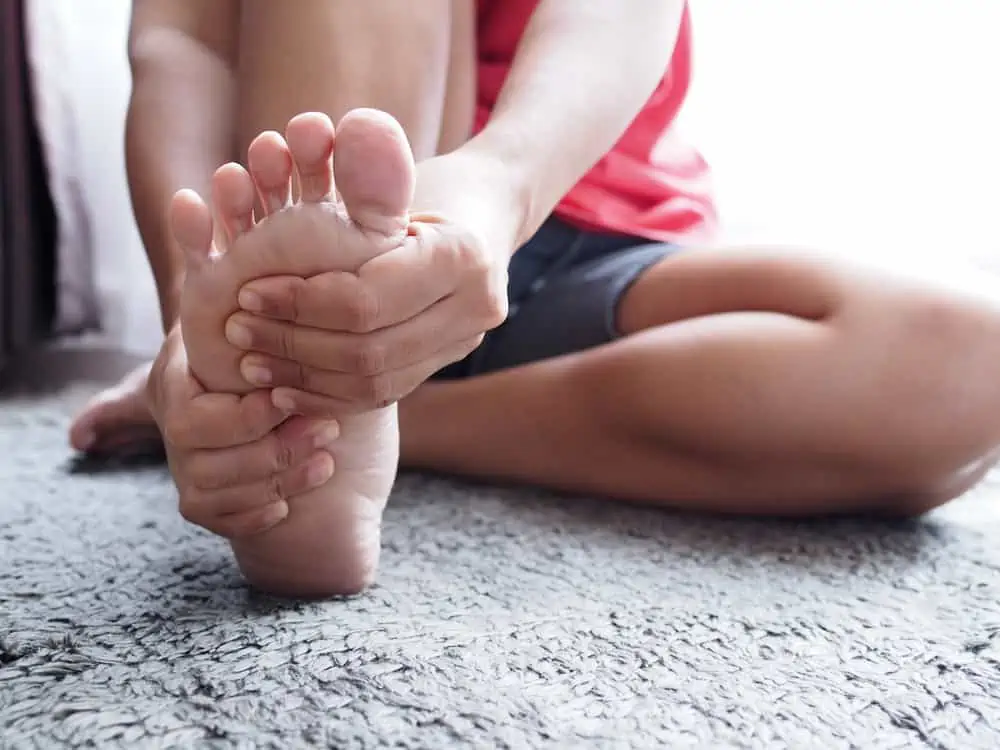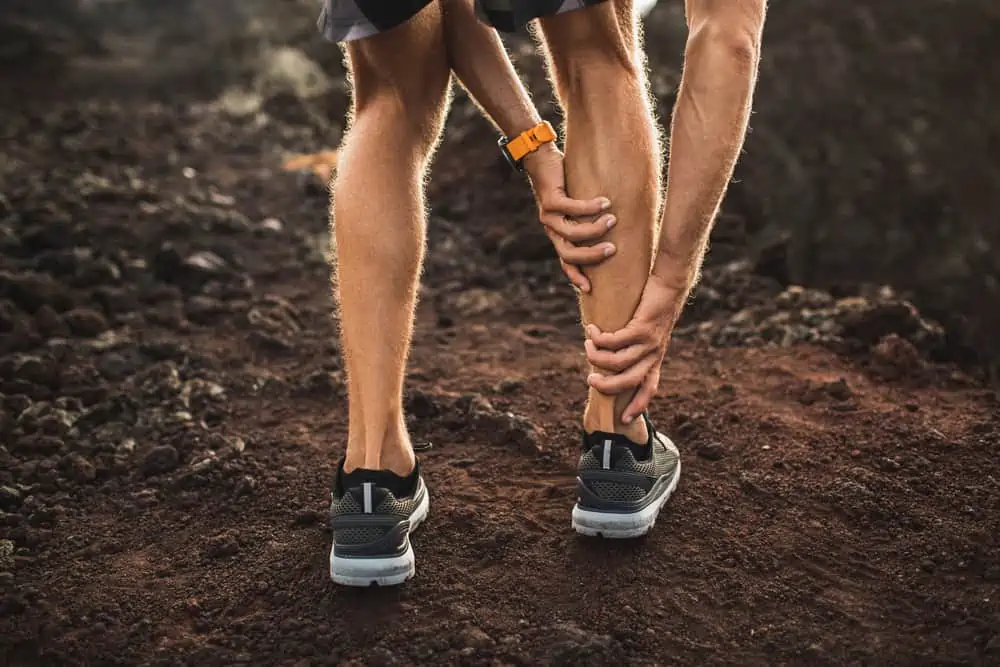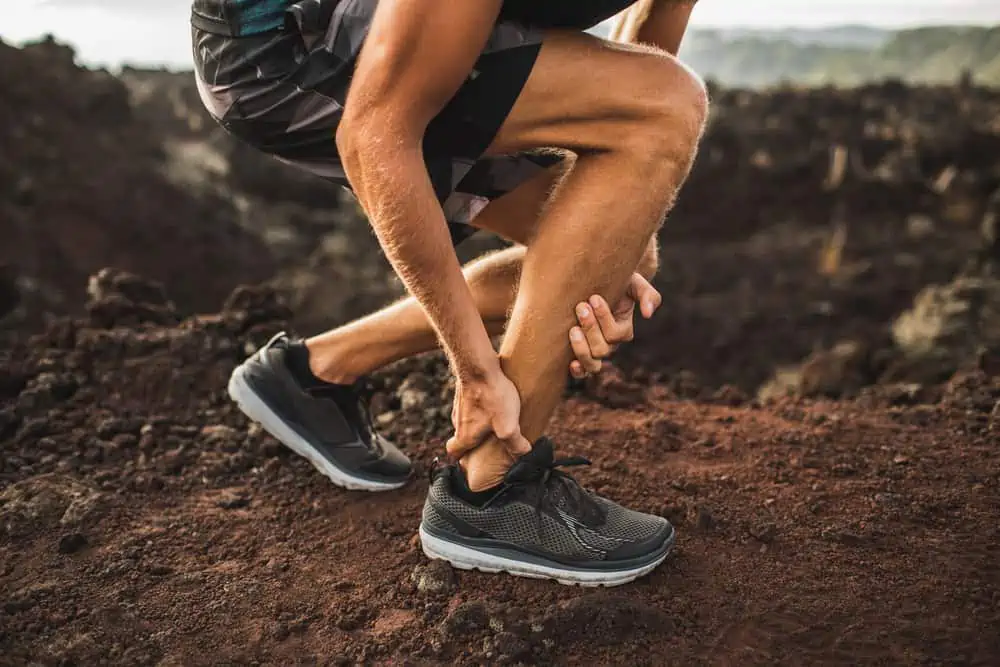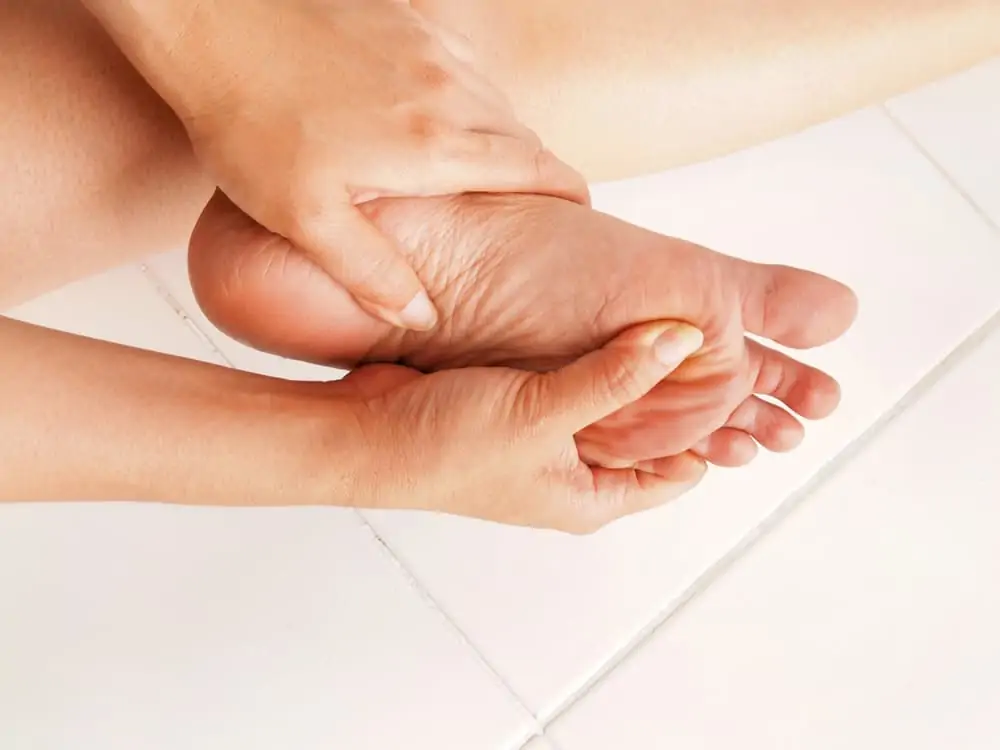This post may contain affiliate links. If you click through a link and make a purchase, I may receive a commission at no additional cost to you. As an Amazon Associate, I earn from qualifying purchases. Read the full disclosure here.
It’s often recommended to wear and supportive running shoe or even a walking shoe when dealing with plantar fasciitis. But what happens during the summer?
Are Birkenstocks good for plantar fasciitis?
The quick answer: Yes, Birkenstocks are a great option for plantar fasciitis because of multiple features that help support the arch and heel, however, they may not be the most comfortable choice for every foot.
Keep reading for a full breakdown of this iconic, supportive shoe.
Disclaimer: This content is for educational purposes and is not medical advice. Read the full disclaimer.
What are Birkenstocks?
Birkenstock is a German shoe manufacturer known for its production of sandals and other shoes, which are famous for their contoured cork footbeds (soles) with arch support constructed with layers of suede and jute, which conform to the shape of their wearers’ feet.
Birkenstock was founded in 1774 by Johann Adam Birkenstock in Germany. The company’s original goal was to design shoes with arch support that contours to the foot, which was not common at the time.
By 1925, Birkenstocks were sold all over Europe, and in 1966, Birkenstocks came to America and were primarily sold in health food stores, gaining popularity among the health-conscious crowd.
Birkenstocks seem to trend in and out of style within mainstream fashion; however, their true followers continue to wear the iconic sandal, and for good reason.
While it may not be your ideal aesthetic, the sole of the Birkenstock sandal has some of the best arch support on the market and becomes even more comfortable as it molds to the shape of the wearer’s foot over time.
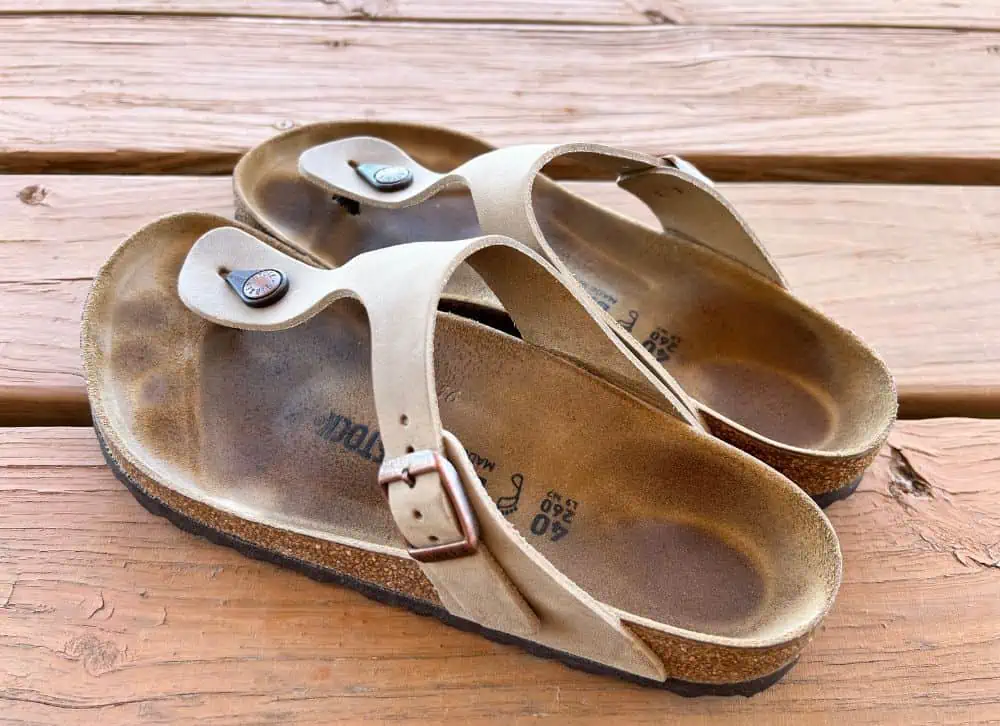
Are Birkenstocks good for plantar fasciitis?
It’s often recommended to wear supportive footwear with arch support to help with plantar fasciitis pain, but what happens during the summer or while on vacation, and you don’t want to be locked into an athletic shoe all the time?
Flip flops, in general, are a poor choice when you have plantar fasciitis.
The flat, unsupportive surface, coupled with the change in walking pattern, can cause or aggravate existing plantar fasciitis and other foot pain.
When you wear flip-flops, you end up curling your toes down with each step which may aggravate the toe flexors that run along the plantar fascia path as well.
A supportive sandal is another story.
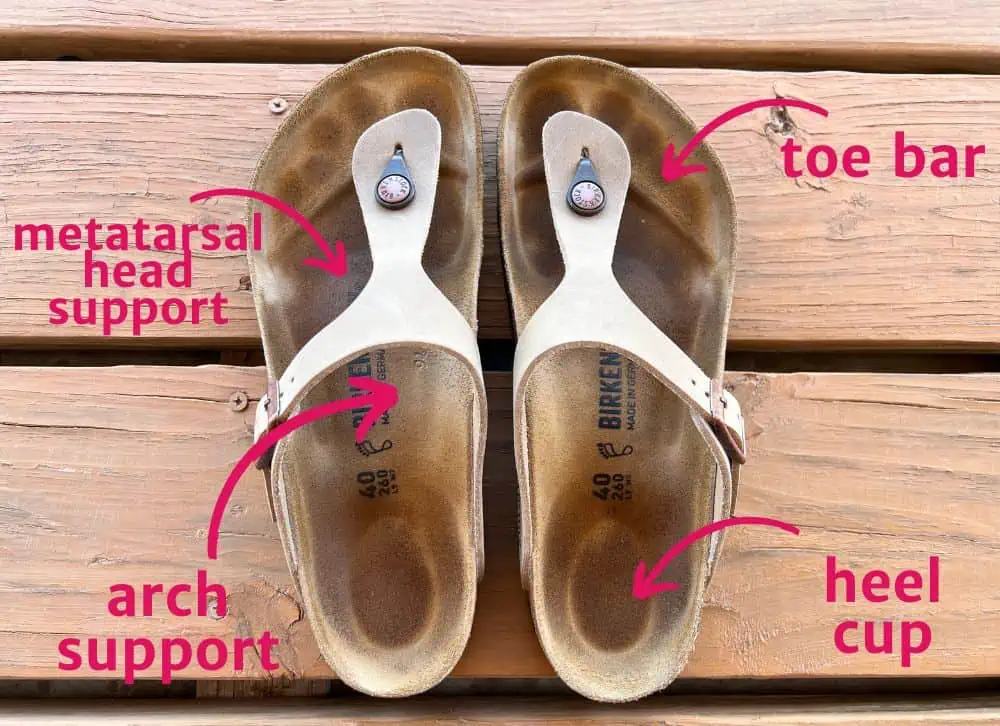
All versions of the sandal have a similar footbed, and some come in narrow and wide versions. For me, the Gizeh style is the most comfortable, but many like the classic Arizona style, which doesn’t have any material between the toes.
Birkenstocks are good for plantar fasciitis for several reasons.
With a deep heel cup and supportive arch, the contoured footbed helps to cushion the painful heel and support the arch of the foot to decrease strain on the plantar fascia. Adjustable straps help customize the sandal to your foot shape.
The toe bar at the top of the shoe helps to encourage the natural rolling of the foot throughout the gait cycle. There is also support built underneath the metatarsal heads (the top of the foot right before the toes), which help to lift and spread the metatarsal heads, decreasing friction that can cause pain or compression issues like a neuroma.
Over time, the footbed starts to mold to your specific foot shape, which can make these supportive shoes even more comfortable. Some of the models have an extra soft footbed for additional comfort.
A study by Vicenzino B et. al. in 2015 concluded that orthosis shaped sandals (sandals that have a supportive, orthotic shaped footbed) are as effective as in shoe orthotics and better than flat sandals for plantar heel pain.
Translation – If it’s summer and you’d prefer to wear sandals with an orthotic base instead of hiding your feet inside of closed shoes, rest assured you’re still doing something good for your plantar fasciitis, just avoid flat flip flops for the time being.
Fixing plantar fasciitis is not just about your shoes
Unfortunately, managing plantar fasciitis isn’t as simple as getting the right shoes or insoles. Foot mobility and strength are very underrated in the management of many conditions, including plantar fasciitis.
The barefoot shoe community will always argue that cushiony-supported shoes make your feet weaker over time because the shoe is doing the work and not your muscles.
While there may be some truth behind this, I don’t think it paints the entire picture, especially for some people who barefoot shoes are not the best option.
The bottom line is that improving strength and mobility of the foot is hard work that takes several months of consistency if not more, to see results. However, if you focus on this consistently, you can work on some of the root causes of pain, instead of just putting a band-aid on the pain.
Many people are not interested in devoting time to this if they can see relatively immediate improvement with a supportive pair of shoes and be pain-free. Also, there will always be people who can’t function without cushioning and support, no matter what.
A comprehensive strengthening and mobility program is also necessary to fully recover from plantar fasciitis, and this may even include looking outside of the foot and ankle. This article explains the common reasons why your plantar fasciitis isn’t going away.
Related read: What Not To Do With Plantar Fasciitis
How do I know if my feet are weak?
Here are some signs that you may need to focus on foot strength and mobility exercises.
- Difficulty with foot dexterity, such as isolating movements of the feet and toes, like wiggling the toes in a coordinated manner, spreading the toes apart, or the ability the move the big toe independently of the rest.
- Fallen arches or increased pronation of the arch
- Decreased flexibility of the ankle
- Unable to point your foot fully or without cramping
- Difficulty with single-leg balance or clumsiness with uneven surfaces (can also be attributed to other conditions)
- Limited time spent barefoot
- Frequent foot cramps or pain
Below are a few YouTube videos with great examples of exercises to strengthen your feet.
Birkenstock sandal alternatives
If Birkenstocks aren’t your style, but you’re still looking for a comfortable walking sandal for the warmer months, check out these options:
Wrapping up
Plantar fasciitis can be painful and difficult to treat.
Footwear is a big part of recovery as well as strength, mobility, and flexibility throughout the foot and ankle as well as other areas of the body.
Birkenstocks can be a viable option for sandals to enjoy the warmer weather but not sacrifice comfort.
Keep reading about how to help plantar fasciitis with this article next! – Speed Up Recovery With Fascia Scraping For Plantar Fasciitis
References
Vicenzino B, McPoil TG, Stephenson A, Paul SK. Orthosis-Shaped Sandals Are as Efficacious as In-Shoe Orthoses and Better than Flat Sandals for Plantar Heel Pain: A Randomized Control Trial. PLoS One. 2015 Dec 15;10(12):e0142789. doi: 10.1371/journal.pone.0142789. PMID: 26669302; PMCID: PMC4686010.

